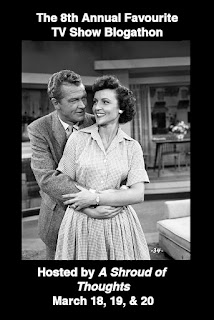Disney's 1948 release So Dear to My Heart is a story of nostalgic childhood memories that shaped a life. During my early school years one of my favourite things was the Scholastic Book Club at school. Perusing the brochure, making my selection and wait for the big day when the box would arrive at the classroom and the teacher would hand out the books. Any questions I get correct on Jeopardy! regarding Greek mythology date back to a book I bought in grade 4. One of the popular books sold by Scholastic was Sterling North's Rascal which Disney filmed in 1969. So Dear to My Heart is based on another of North's stories, 1943s Midnight and Jeremiah.
John Beal (Les Miserables, The Cat and the Canary, My Six Convicts) narrates the story as the adult Jeremiah who returns to the Indiana farm where he was raised by his Granny and tells of his adventures raising an abandoned black lamb. Beal also sings the lilting movie theme song. Old scrapbooks found in a farmhouse attic lead to the reminiscence of days past.
Beulah Bondi as Granny Kincaid
Bobby Driscoll (The Window, Peter Pan, The Happy Time), barely 10-years-old, plays the young Jeremiah, a rambunctious and imaginative orphan. Jeremiah lives with his Granny Kincaid played by Oscar nominee and Emmy winner Beulah Bondi (Remember the Night, The Furies, Track of the Cat). This "granny" is not the querulous elder of The Southerner, but a strong-minded, hard working woman who genuinely cares for and wants the best for Jeremiah. She knows her scripture and although may often appear too strict to the youngster, her love and his trust is absolute.
Jeremiah's male influence is his easy-going Uncle Hiram played by Oscar winner Burl Ives (The Big Country, Cat on a Hot Tin Roof, The Brass Bottle). Uncle Hiram has a way with a song or two, and a way around Granny when needs must. Jeremiah's childhood pal is little Tildy played by Song of the South co-star Luanna Patten.
A great day in the life of Jeremiah and the small village that is his home is when the train stops so a special passenger can get some exercise. It is the famous trotter Dan Patch and Jeremiah is transfixed with the champion and begins to dream of raising a champ of his own. When a little black lamb is rejected by its mother Jeremiah begs Granny to let the creature become his pet. Granny has her doubts and at first wants to simply let nature take its course, but she sees that the boy needs this in his life and relents. "Danny" soon becomes Jeremiah's main focus. The hard-headed creature is difficult to train and has destructive tendencies which drives Granny to distraction. Jeremiah has a lot of work to do, and he'll need help. Jeremiah gets that help from a wise old owl.
Affirmations fill Jeremiah's old scrapbook - "It's what you do with what you got that counts", "If at first you don't succeed, try, try again". These little lessons come to life through charming animated sequences featuring a professor owl voiced by Son of the Pioneers Ken Carson. Each little lesson and song helps Jeremiah groom his Danny into a likely prospect for the stock competition at the County Fair. However, Granny doesn't see the benefit of attending the fair and it takes Hiram and the kids combined efforts to achieve that hoped for trip.
Raising money for the trip is a problem for Jeremiah until he hears Mr. Grundy, the shopkeeper played by Raymond Bond, tell how the city folks like to pay for wild honey. Jeremiah wonders how you get wild honey and Grundy smiles, telling Jeremiah to look for a wild bee and and follow him home. One of my all-time favourite movie quotes is Grundy's response to a customer who asks why he would waste that boy's time. Pete Grundy: "What's time to a boy?" He has encapsulated all our long, lazy childhood summers when time stretched out infinitely before us.
Harold D. Schuster (My Friend Flicka) directed the live-action segments and Hamilton Luske (Lady and the Tramp) the animated sequences. Among the animated highlights is the delightful County Fair by Bob Wells and Mel Torme (The Christmas Song). I have seen Mel perform this number on The Rosemary Clooney Show and The Gisele MacKenzie Show.
This charmer ends on a high note with the wise and sympathetic judge at the County Fair is played by the wonderful Harry Carey in one of his last screen performances.
So Dear to My Heart is a particular favourite of my son Gavin. I will go so far as to say that it is "our" movie. TCM and Leonard Maltin once again open the Disney vault on Thursday, December 17th with So Dear to My Heart starting off the evening's entertainment.



























